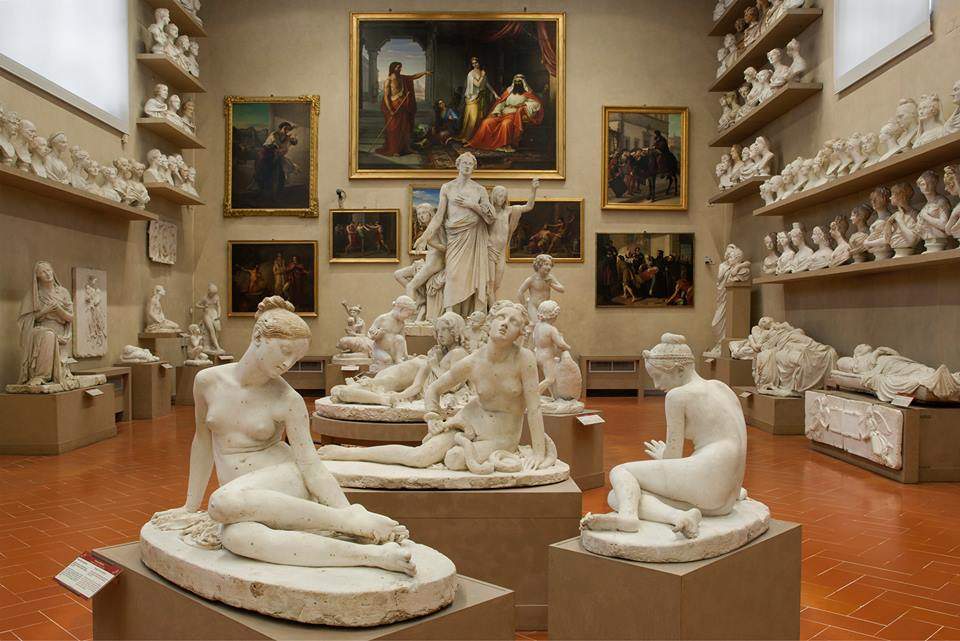Could the government crisis cause chaos in cultural heritage?
For sure, the government crisis opened over the weekend by Interior Minister Matteo Salvini will not collapse the Ministry of Cultural Heritage and Activities, but in the aftermath of the publication in the Official Gazette of the reform of the dicastery and as we await the developments that the crisis will take, it is safe to imagine that the transition from the Franceschini reform to the Bonisoli “counter-reform” may not pass smoothly and smoothly.
As is now well known, Minister Alberto Bonisoli’s reform introduced several changes in the structure of the Ministry of Cultural Heritage: first of all, the abolition of three autonomous museums, namely the Accademia Gallery in Florence, the Appia Antica Archaeological Park, and the National Etruscan Museum of Villa Giulia. For the three institutes, the abolition will become effective immediately on the effective date of the Prime Ministerial Decree containing the reform (Aug. 22). It means, in the meantime, that the three respective directors (Cecilie Hollberg, Simone Quilici and Valentino Nizzo) will no longer be such, and it is unclear what duties they will go on to fill. Consider, moreover, that Simone Quilici’s case is one for the record books, since, after winning the competition, he had been invested in his post in mid-June: his directorship lasted, therefore, barely a couple of months. Or think of the Accademia Gallery, where major restoration works have just begun, or of Villa Giulia, where this year we are celebrating anniversary number 130 since its founding. Nizzo, from his Facebook profile, made it known that his role has yet to be defined. Similarly, the fate of the three museums has yet to be officially determined: according to what has transpired in recent days, the Accademia Gallery will probably be merged with the Uffizi, while the two Roman institutes will fall within the ranks of the Special Superintendency of Rome. However, it is necessary for the minister to intervene soon to establish, on the record, what their future will be.
Likewise, the fate of the new peripheral bodies created by the reform is awaited. Indeed, the measure has made the export offices autonomous, which have been detached from their superintendencies, abolished regional museum poles, creating “territorial directorates of museum networks,” and likewise cancelled the regional secretariats, which have been transformed into “district secretariats.” However, the new peripheral divisions need to be identified through special implementing decrees, which will determine how and from which institutes the new offices will be composed. And until the decrees are issued, the ministry will continue to work with the structure that existed before the reform. Then the new Directorate General for Contracts and Concessions must also be organized: for example, an implementing decree will have to be issued to establish the amount of value within which the various emanations of the ministry will be able to act autonomously, without going through the central office (pending this, the transitional and final rules set at 100,000 euros the amount within which the peripheral offices can independently procure goods and services in economy and act as a contracting station).
 |
| The Bartolini gallery of plaster casts at the Galleria dellAccademia in Florence. The museum lost its autonomy under the Bonisoli reform. |
Another issue, which is not related to the reform but is nonetheless of pressing urgency, is competitions. There will be no problem for the one that will lead to the hiring of 1,052 assistants to fruition, reception and supervision, but Minister Bonisoli, in recent days, had announced that in the fall would come “other public competitions, so as to cover the totality of the professions that serve the daily work of the Ministry, in the headquarters and in the territory, to arrive at a total, overall, of about 5,400 new hires.” Depending on the turn the government crisis takes, it is possible to assume that the calls will slip forward in time: and this would be a problem compounded by the fact that, in 2019 alone, more than 1,000 potential retirements as a result of “quota 100” have been estimated. It will therefore have to be seen how the next government intends to deal with the crucial issue of recruitment on which, it is not far-fetched to say, the very survival of the ministry depends.
There is a feeling that everything has been done in haste, too quickly, without proper discussion, without thorough evaluation-a feeling exacerbated also by the fact that Bonisoli has received criticism from members of his own party. Never before had the ministry needed clear direction: instead came a counter-reform whose rationale still seems in many ways a mystery (why centralize so many activities? Why take away autonomy from certain museums rather than others?), not very useful, in contrast to the work done in past years, hastily approved at a time of strong political instability and with a government that, since March (i.e., since the reform project began to circulate), has proved increasingly fragile day by day. And now all that remains is to wait for the course of events.
Warning: the translation into English of the original Italian article was created using automatic tools. We undertake to review all articles, but we do not guarantee the total absence of inaccuracies in the translation due to the program. You can find the original by clicking on the ITA button. If you find any mistake,please contact us.




























